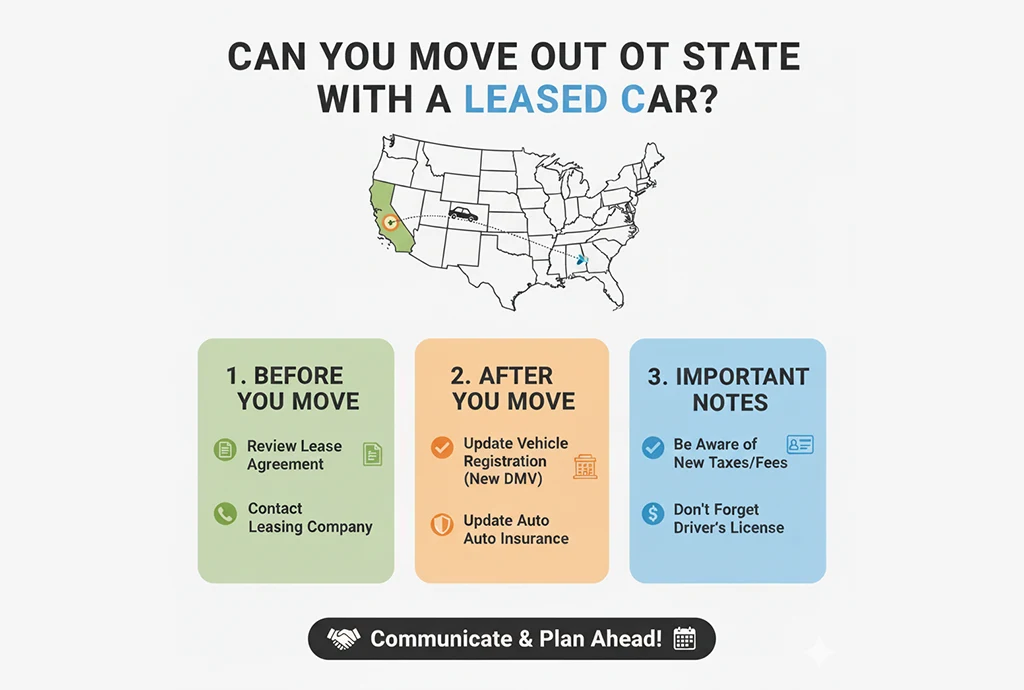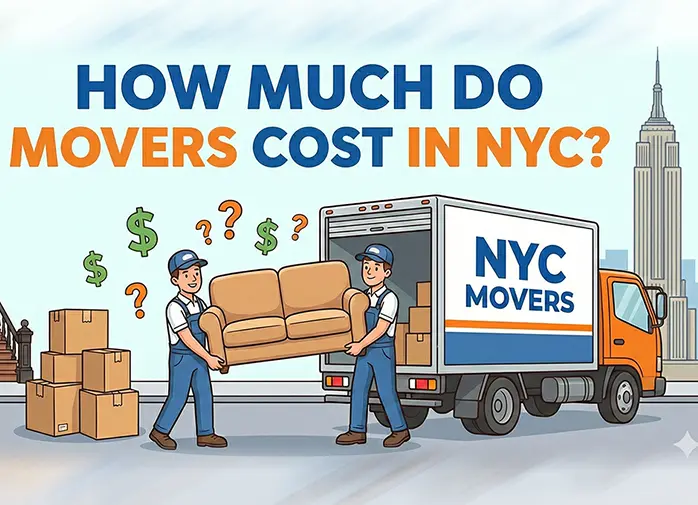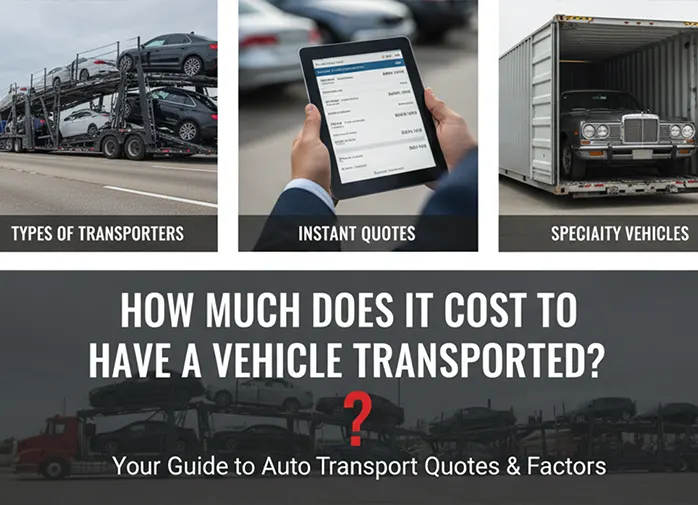Can You Move Out of State With a Leased Car?

Moving out of state can be exciting — a fresh start, new opportunities, and a chance to explore a derent environment. But it also comes with unique challenges, especially if you’re driving a leased car. Unlike fully owned vehicles, leased cars come with restrictions, mileage limits, and contractual obligations that require careful planning.
If you’re considering an interstate move, it’s important to understand the logistics of taking a leased car with you, your responsibilities under the lease, and the practical steps for registration, insurance, and relocation. In this guide, we’ll walk through everything you need to know, plus tips to make the move as smooth as possible — including using professional moving services like VanLinesMove.
Can You Legally Move a Leased Car Out of State?
Yes, you generally can move a leased car out of state, but you need to check your lease agreement first. Most lease contracts allow relocation, but some may have restrictions, require notification to the leasing company, or impose additional fees.
Key Points:
- Review your lease for any “relocation” or “permissible use” clauses.
- Notify the leasing company in writing about your move. Some companies require approval before moving the vehicle.
- Understand potential fees or changes in insurance coverage that may result from moving to a new state.
Notify Your Leasing Company
Contacting your leasing company is the first and most crucial step. They may need:
- Updated address for billing and correspondence.
- Proof of your new residency (utility bill, lease agreement, etc.).
- Confirmation that your insurance meets state-specific requirements.
Tip: Some leasing companies have special instructions for long-distance moves. Early notification can prevent penalties or contract violations.
Check State Registration Requirements
When moving out of state, you usually need to register your leased car in the new state. DMV requirements vary, but generally include:
- Providing proof of insurance that meets state minimums.
- Paying registration fees and taxes.
- Passing any required safety or emissions inspections.
Example: If you move from California to Texas, you may need a Texas insurance policy, pay state vehicle taxes, and complete a safety inspection within 30 days of establishing residency.
Pro Tip: Keep all lease documentation handy — DMV staff may request a copy showing you’re the legal lessee.
Insurance Considerations
Insurance is not transferable across states without adjustments. You’ll likely need:
- New state-specific coverage.
- Updated policy reflecting your new address.
- Verification that your lease’s minimum coverage requirements are met.
Failing to update your insurance can result in penalties, fines, or even a lease violation. Some insurance companies allow interstate moves with temporary coverage until permanent adjustments are made.
Moving a Leased Car — Driving vs. Transporting
When relocating, you have two main options:
Option 1: Drive the Car Yourself
- Pros: Flexible, cost-effective if you enjoy road trips.
- Cons: Adds wear and mileage to your lease, potential for accidents, insurance complications across state lines.
Option 2: Hire an Auto Transport Company
- Pros: Protects your car, reduces wear, safer for long distances.
- Cons: Costs range from $600–$1,500 depending on distance, vehicle size, and service level.
Tip: If you’re also moving household items, consider VanLinesMove, which can coordinate auto transport along with your household relocation for a smooth, single-move experience.
Mileage Limits and Lease Terms
Leased vehicles come with annual mileage limits (typically 10,000–15,000 miles/year). Exceeding these limits can result in significant penalties.
Moving tip: Estimate the distance of your interstate move and add any other planned trips to ensure you stay within your lease’s mileage limit. If you’re close to the limit, you may negotiate a temporary adjustment with your leasing company or pre-purchase additional miles.
Vehicle Inspection Before the Move
Most leasing companies require a pre-move inspection to document the condition of your car. This ensures:
- Any existing damage is recorded before transport.
- You avoid being charged for pre-existing wear and tear.
Tip: Take clear photos of your car’s exterior and interior before moving. Keep them in your records in case disputes arise.
Lease-End Considerations
When moving out of state, think about the lease’s end-of-term requirements:
- Where will you return the car? Some companies allow out-of-state returns.
- Will you need an early termination? If so, check for fees.
- Keep your lease in good standing — unpaid fees, missed inspections, or unreported moves can impact your credit score.
Pro Tip: If you’re planning a long-term relocation, consider leasing a car in your new state and coordinating with your current lease company for a smooth transition.
Plan for Timing and Logistics
Moving a leased car requires careful planning:
- Notify the leasing company 30–60 days before moving.
- Update insurance and DMV records.
- Decide between driving or shipping the car.
- Schedule pre-move inspection.
- Coordinate with your household movers if needed.
Using a full-service moving company like VanLinesMove allows you to coordinate both your household move and your leased car transport, reducing stress and ensuring everything arrives safely.
Common Mistakes to Avoid
- Failing to notify the leasing company — can result in lease violations.
- Ignoring state DMV requirements — can lead to fines and registration issues.
- Skipping insurance updates — may leave you underinsured or in breach of the lease.
- Underestimating mileage — can result in thousands of dollars in penalties.
Costs to Consider When Moving a Leased Car
Moving a leased car involves more than just physical transport:
| Cost Type | Typical Range | Notes |
|---|---|---|
|
Auto transport |
$600–$1,500 |
Depending on distance and service type |
|
Registration fees |
$50–$400 |
Varies by state |
|
Insurance adjustment |
$50–$200 |
New policy or add-on for interstate coverage |
|
Additional mileage fees |
$0.10–$0.25 per mile |
If exceeding lease limits |
Tip: Combining car transport with household movers can sometimes save money and reduce complexity — again, a benefit of using VanLinesMove.
Tips for a Smooth Interstate Move With a Leased Car
- Communicate early with your leasing company.
- Update your insurance to meet the new state’s minimum requirements.
- Plan your route carefully if driving — factor in weather and road conditions.
- Consider professional auto transport for long-distance moves.
- Document car condition before the move with photos.
- Coordinate with household movers for simultaneous pickup/delivery if possible.
- Track mileage to avoid exceeding limits.
- Keep records of all correspondence with leasing company and insurance.
How VanLinesMove Can Help?
Moving out of state is stressful, and juggling household items along with a leased car can be overwhelming. VanLinesMove provides:
- Full-service household moving.
- Auto transport services for leased or owned vehicles.
- Coordination to ensure both your belongings and your car arrive safely.
- Professional packing, loading, and delivery to minimize damage risk.
By combining your household move with professional leased car transport, you reduce stress, avoid potential lease violations, and save time.
Frequently Asked Questions (FAQs)
1. Can I drive my leased car across state lines without telling the leasing company?
It’s not recommended. Most lease agreements require notification for extended moves or changes in residence. Not informing them could violate your contract.
2. Will my insurance cover my leased car in another state?
You must update your insurance to meet the new state’s requirements. Some insurers offer temporary coverage for interstate moves, but verification is crucial.
3. How much does it cost to ship a leased car?
Costs range from $600 to $1,500 depending on distance, vehicle size, and service level. Combining it with your household move can sometimes reduce costs.
4. Can VanLinesMove transport my leased car safely?
Yes. VanLinesMove specializes in professional auto transport for leased or owned vehicles, ensuring your car arrives safely and on time during your relocation.
Conclusion
Yes, you can move out of state with a leased car, but careful planning is key. Always notify your leasing company, update insurance, and follow DMV rules. Decide whether to drive your car or use a professional transport service. Pay attention to mileage limits, pre-move inspections, and lease-end responsibilities.
For a smooth, stress-free relocation, especially for long-distance moves, consider using VanLinesMove. They can coordinate household moving and auto transport, allowing you to focus on settling into your new home while your belongings and leased vehicle are handled professionally.
Categories
- Long Distance Moving153
- Local Moving119
- Commercial Moving40
- Residential Moving34
- Last – Minute Moving25
- Moving Tips & Lifestyle10
- Furniture Moving9
- Moving Tips & How-To Guides8
- Moving services6
- Moving Cost5
- Moving Cost Calculator5
- state to state movers4
- Piano Moving3
- Car Transportation3
- Truck Rental3
- moving tips3
- Local Move3
- Moving companies3
- best moving rates3
- cheap moving companies3
- affordable moving companies3
- full-service movers3
- Moving Cost Guides3
- Junk Removal2
- Moving Container2
- Senior Moving2
- Senior Relocation Moving Companies2
- Moving Tools2
- Moving Estimates2
- interstate moving2
- Moving2
- cross-country move2
- Household moving2
- Moving Costs & Budgeting2
- Moving Tips & State Guides2
- Heavy Equipment1
- Senior Moving Services1
- office moving1
- office relocation1
- employee relocation1
- Car Transport1
- Vehicle Shipping1
- Car Shipping Services1
- Artificial Intelligence1
- Office Moving Services1
- Commercial Moving Companies1
- Corporate Moving Services1
- Corporate Movers1
- full-service moving companies1
- sustainable moving companies1
- green movers1
- Moving in US1
- Best places to move in 20251
- 2025 moving1
- Full-Service Moving Companies1
- College Moving1
- College moving services1
- Moving to College1
- Dorm Moving1
- Tips for moving1
- donate1
- sell1
- Movers in California1
- Movers in Studio City1
- Moving to California1
- Laws about Moving into California1
- Moving Laws1
- House moving1
- packing1
- cheap moving ways1
- Moving guide1
- International moving1
- moving across countries1
- international relocation program1
- move out cleaning1
- right packing supplies1
- pack while moving1
- Apartment moving1
- PODS1
- moving out1
- state to state move1
- California movers1
- Truck Rental1
- US Territory Relocation1
- International Moving1
- Shipping & Moving Tips1
- Moving Tips1
- Relocation Guide1
- Moving Budget Guide1
- Relocation Guides & Incentives1
- Moving Tools & Equipment Guides1
- Moving Services & Options1
- Moving Tips & How-To Guides1
- Moving Day & Settling In1
- Mobile Home Moving1
- Moving Guide & Tips1
- Moving Tips & State Comparisons1
- Moving Tips & City Guides1
- Moving Tips & Cost Guides1
- Long-Distance Moving Tips1
- Moving Tips & Financial Planning1
- Moving Tips & Home Preparation1
- Moving Tips & Planning1
- Vehicle Shipping & Auto Transport1
- Marketing & Lead Generation1
- International Moving Guides1
- San Francisco Moving Guide1
- NYC Moving1
- Local Movers1
- Budget Moving1

 Local Movers
Local Movers Last-Minute Movers
Last-Minute Movers Junk Removal
Junk Removal Long Distance Movers
Long Distance Movers Piano Movers
Piano Movers Heavy Equipment
Heavy Equipment Commercial Movers
Commercial Movers Moving Container
Moving Container Car Transportation
Car Transportation Furniture Movers
Furniture Movers Truck Rental
Truck Rental Moving Cost Calculator
Moving Cost Calculator Moving Planner
Moving Planner Packing Calculator
Packing Calculator Moving Checklist
Moving Checklist Moving Insurance
Moving Insurance FAQ
FAQ Contact Us
Contact Us Moving Loan
Moving Loan About Us
About Us











